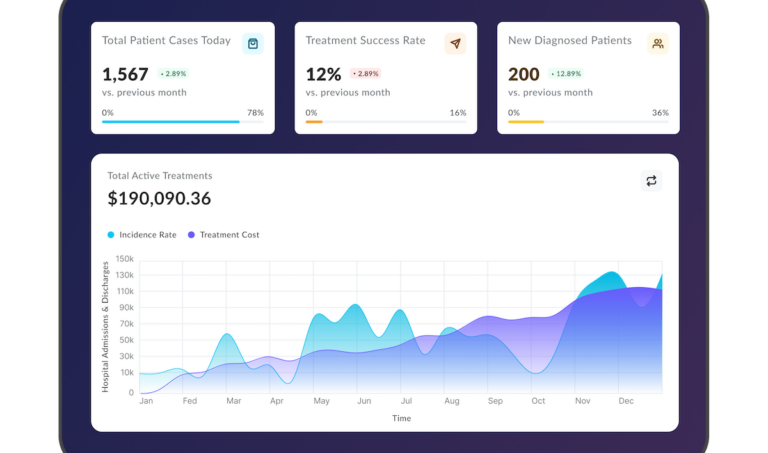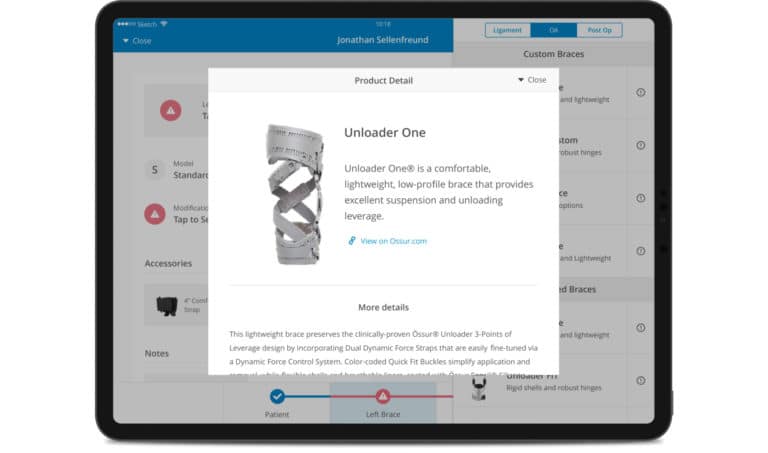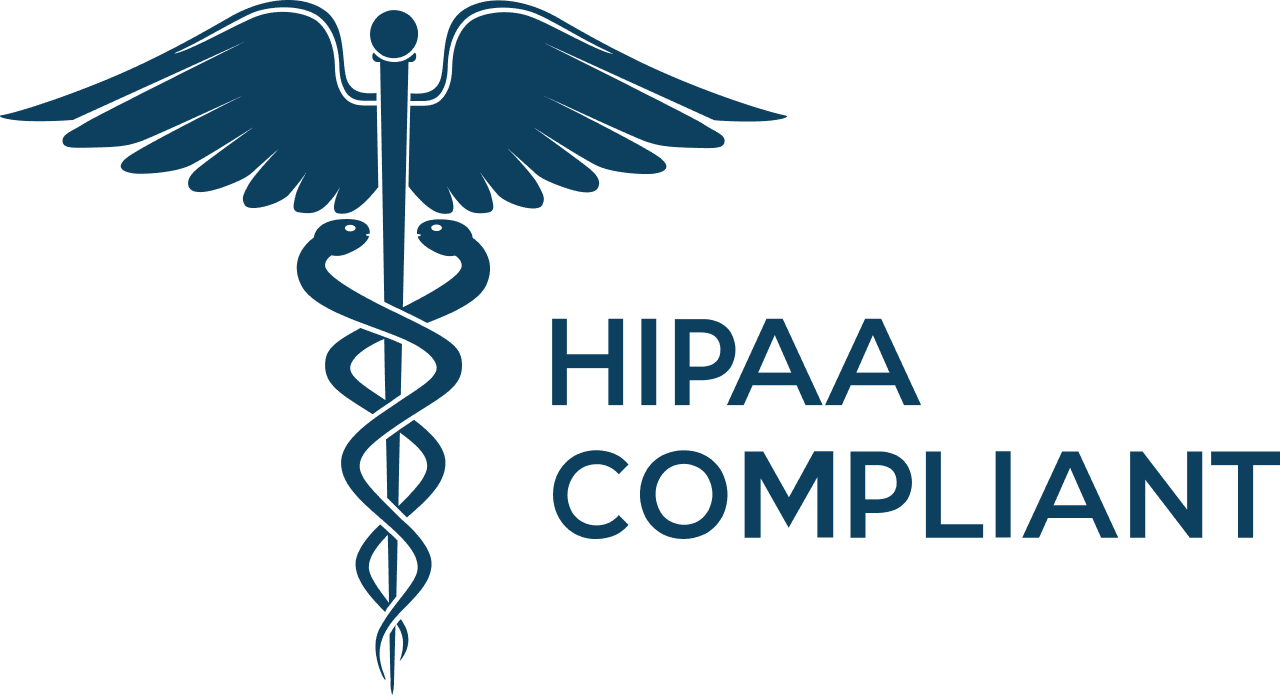IoT in Agriculture: Top Applications for Modern Farming
Updated: September 12, 2024
Thanks to the rise of IoT in agriculture, farms are more interconnected than ever. Smart devices have become widespread in various aspects of agribusiness, from crop monitoring to logistics management. After all, this shift is natural. At a time when technologies like self-driving cars and virtual reality have become mainstream, relying on traditional methods seems outdated and ineffective.
Are you an executive in an agricultural business determined to push crop yields even higher? Or perhaps you’re a farmer focused on optimizing your operations? Whether your goal is to boost farming productivity or tackle broader agricultural challenges, agriculture software development could be the solution you need.

We provide companies with senior tech talent and product development expertise to build world-class software. Let's talk about how we can help you.
Contact usTable of Contents
What is IoT in Agriculture?
IoT in farming works by using devices such as soil sensors, GPS-equipped machines, and weather trackers to gather real-time data on field conditions. These tools constantly check soil moisture, nutrient levels, and field conditions like temperature and humidity. All of this data flows into a central platform where you can easily monitor field conditions and spot potential issues early, such as water shortages or nutrient deficiencies, before they become bigger problems.
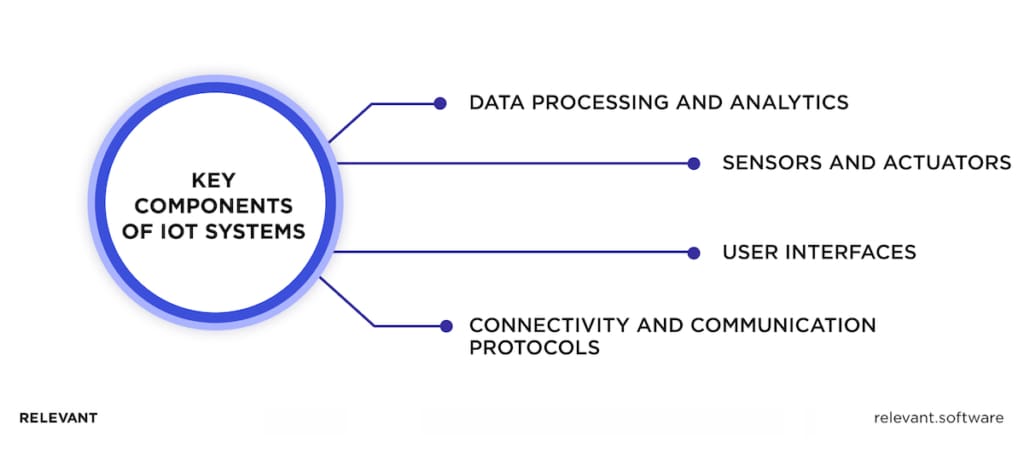
Related – What is IoT
Key Components of IoT Systems in Agriculture
Successful development of IoT products for agriculture hinges on understanding key elements of this technology. Here’s a closer look:
Sensors and Actuators: In agricultural IoT systems, sensors track critical factors such as soil moisture, temperature, and crop health, enabling farmers to optimize their operations. Based on the information gathered, actuators adjust irrigation systems or regulate greenhouse environments to meet crop needs.
Connectivity and Communication Protocols: Reliable communication ensures that devices on the farm work together. Protocols like Wi-Fi, Bluetooth, and cellular networks facilitate data exchange between devices. The choice of protocol depends on farm size and the need for real-time data.
Data Processing and Analytics: Farmers depend on data processing and analytics to make sense of the information their IoT devices collect. Edge computing handles immediate tasks right at the source, while cloud computing dives into deeper analysis to spot trends.
User Interfaces: UIs allow farmers to interact with their IoT systems easily. A user-friendly UI makes it simple to access data, adjust settings, and receive alerts for issues like pest outbreaks or equipment failures. Whether through mobile apps or web platforms, effective UIs give farmers greater control over their operations.
Related – How to Make IoT Devices Dashboard
IoT Farming Market Overview
The IoT market in agriculture is set for significant growth, with projections showing an increase from $18.43 billion in 2024 to $71.75 billion by 2032 at an annual growth rate of 19.3%. It brings a deeper change in how we farm. What used to be tech reserved for early adopters has become the new normal, driven by the need to farm like a pro in a world where climate change and resource shortages are making sure there’s no time for guesswork.
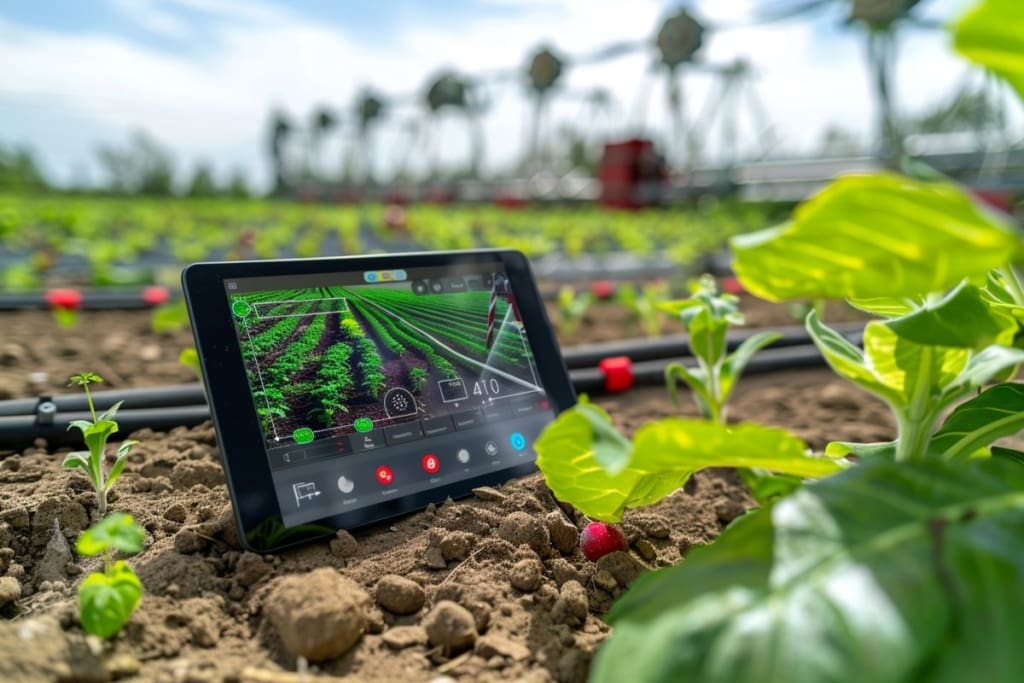
What are some examples of IoT applications in agriculture?
Precision farming with soil sensors, automated irrigation controlled by data, livestock health tracking, and drone-based crop monitoring are key examples of IoT in agriculture.
Benefits of IoT in Agriculture
Smart technology in farming opens up various advantages that go beyond the limits of traditional methods. Here’s how IIoT (Industrial IoT) makes agriculture more efficient, productive, and easier for farmers worldwide:

Enhanced Farm Productivity and Efficiency
IoT in agriculture increases crop yields and quality by tackling issues like pests and diseases early on. For example, smart irrigation systems with soil moisture sensors adjust water levels based on real-time data, ensuring crops get the right amount of water.
Cost Reduction and Profitability
The adoption of IoT leads to lower costs and higher profitability due to minimized waste and improved efficiency. As an example, automated pest control systems lower reliance on manual intervention, which consequently reduces labor costs.
Sustainable Farming Practices
The Internet of Things enables much more sustainable agribusiness because it reduces pesticide and fertilizer use, conserves water, and minimizes environmental harm. For instance, precision fertilization systems utilize sensors and GPS data to apply fertilizers only where needed, decreasing waste and protecting the environment.
Improved Decision-Making with Data Analytics
With collected data—such as soil conditions, weather patterns, and crop health—farmers can employ predictive analytics to plan more effectively and respond quickly to changing circumstances. For example, through data analytics, a farmer can predict the optimal time to plant and harvest, maximizing yields and minimizing risks associated with unpredictable weather in agricultural production.
Key Applications of IoT in Agriculture
With IoT’s impact on agriculture, the market is expected to grow at a CAGR of 19.3% over the next decade. This surge reflects the urgent need for innovative farming practices that effectively manage limited resources while meeting the demands of a growing population.
Precision Farming
Precision farming uses IoT tools to bring unparalleled accuracy to agriculture. IoT gives farmers the ability to track soil, weather, and crop health like they’ve got their own agri-sci-fi toolkit, optimizing the farm down to the last detail.
IoT-Based Soil Monitoring Systems
Soil sensors equipped with IoT provide real-time data on moisture, pH, and nutrient levels. For example, a farmer can receive immediate alerts when soil moisture drops below the ideal level, enabling timely irrigation to prevent crop stress and enhance growth.
GPS-Enabled Equipment for Precision Planting and Harvesting
IoT-powered GPS technology allows farmers to plant and harvest with pinpoint accuracy. For example, GPS-guided tractors plant seeds at precise intervals, which results in uniform crop growth and easier harvesting.
Related – IoT Architecture in Detail
Smart Irrigation Systems
Water is one of the most precious resources in sustainable agriculture, and its wise use is essential. Smart irrigation systems leverage IoT technology to make every drop count. By using real-time field data and automation, these systems help farmers optimize water distribution, leading to healthier crops and less waste.
Soil Moisture Sensors and Automated Irrigation
Smart irrigation systems rely on soil moisture sensors that provide constant data on water levels. When moisture drops below a certain point, the system automatically waters the crops, which ensures they receive the right amount of water without over-irrigating. This precision prevents both water shortages and excess, which can harm plants.
Climate Data for Water Management
By integrating IoT with climate data, farmers can manage irrigation more efficiently, using weather forecasts and past climate information. For example, if rain is expected, the system postpones irrigation to avoid oversaturation, conserve water, and maintain ideal soil conditions.
Livestock Monitoring and Management
Effective livestock management is essential for both profitability and sustainability in agribusiness. Innovative technologies now help meet the rising demands for optimized productivity while prioritizing animal welfare.
Wearable IoT Devices for Livestock
Smart collars and tags track vital signs, activity levels, and the location of livestock within set virtual boundaries. These devices alert farmers if an animal shows signs of illness or moves away from the herd, enabling quick intervention. For example, if a cow’s activity drops, the smart collar notifies the farmer, prompting a health check.
Automated Feeding and Health Systems
IoT-powered systems adjust feeding schedules and monitor animal health by analyzing sensor data. These systems can optimize feed amounts and detect potential health issues early. For instance, when a device shows a cow has a fever, the system alerts the farmer to provide timely treatment, which reduces the risk of disease spread.
Crop Health and Pest Monitoring
The challenge of maintaining healthy crops and managing pests is always on a farmer’s mind, but the Internet of Things shifts the balance in their favor – especially in terms of disease detection.
Drones and IoT Sensors for Crop Monitoring
Agricultural drones with IoT sensors fly over fields to collect detailed images and data on crop health. From above, farmers can detect problems like diseases or nutrient shortages that might go unnoticed from the ground. Drones, for instance, can spot crop stress from poor irrigation, allowing immediate corrective measures.
IoT for Predictive Pest Control
IoT sensors use data to predict potential pest infestations. For example, when sensors detect higher humidity and temperature, which attract certain pests, farmers can apply treatments early, which can prevent an outbreak from spreading.
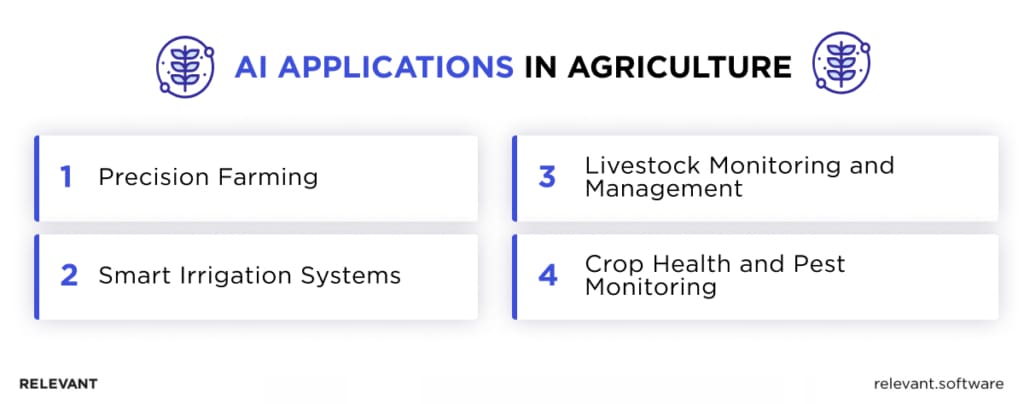
Challenges in Adopting IoT in Agriculture
While integrating the Internet of Things for smart farming presents its own set of challenges, these should be viewed as opportunities for growth and innovation. Addressing these issues effectively can lead to meaningful advancements and enhancements in farming operations.
High Initial Investment Costs
One of the most urgent challenges is the high initial investment required to integrate IoT technology into agricultural operations, which can significantly impact operational costs. These include the purchase of IoT devices, equipment upgrades, and the implementation of necessary software and infrastructure. While large agribusinesses may absorb these costs more easily, small-scale farmers may find them prohibitive, potentially widening the gap between those who can leverage advanced technology and those who cannot.
Tips from our experts: To make these costs more manageable, we suggest starting small – with scalable agriculture IoT solutions that can be expanded over time. Additionally, you might look into grants, subsidies, and low-interest loans specifically designed to help farmers adopt new technology. Collaboration with local cooperatives or agricultural groups can also spread the cost and make the initial investment more feasible.
Connectivity Issues in Rural Areas
IoT implementation in agriculture also faces the challenge of connectivity, especially in rural areas where internet and communication infrastructure may be limited. Without consistent connectivity, the benefits of IoT—such as accurate data collection and remote monitoring—remain out of reach for many farmers.
Tips from our experts: To address this, we recommend looking into alternatives like satellite internet or mesh networks, which offer better coverage in remote areas. Partnering with local governments or community efforts to strengthen rural broadband can ensure remote farms benefit from the technology.
Data Security and Privacy Concerns
With the increasing reliance on data collection and analysis in IoT solutions for agriculture, concerns about data security and privacy are becoming more pronounced. Farmers are rightfully cautious about who has access to their data and how it might be used. Sensitive information, such as crop yields, soil health, and resource usage, could be vulnerable to cyberattacks or misuse if not properly protected. This creates a significant trust barrier for IoT adoption.
Tips from our experts: It is advisable to apply strong encryption methods and opt for secure cloud storage to safeguard your data. Also, perform security audits regularly and train your team on data protection best practices to minimize risks in agricultural IoT solutions.
Related – Steps and Strategies for Effective IoT Product Development
IoT Technology and Agriculture: What Does the Future Hold?
As the world’s population grows and food demand increases, agriculture must evolve, with IoT software development and technological advancements leading the way as a driving force for smart applications. This shift means that every decision, from planting to harvest, will rely on data and smart technology. However, while IoT in agriculture plays a significant role, it is not the only one—several other innovations are also emerging.
AI and Machine Learning Integration
AI and IoT applications in agriculture have the potential to significantly elevate farming practices. By gathering data from every corner of your fields—such as soil health, weather patterns, and crop growth—artificial intelligence (AI) predicts future conditions and recommends the best course of action. Whether you detect early signs of a pest invasion or determine the optimal time for watering, AI in precision agriculture ensures proactive actions that help your farm thrive.
Autonomous Farming Machines
The future of agriculture extends beyond smart analytics—fully automated farms are on the horizon. Picture a fleet of drones and robotic tractors that collaborate seamlessly to plant seeds, apply fertilizers, and harvest crops without human intervention. These machines will run 24/7, adapt swiftly to changing field conditions, and make sure every bit of farmland reaches its maximum potential.
Blockchain and IoT for Supply Chain Transparency
Blockchain technology, when paired with IoT applications in agriculture, is set to revolutionize supply chain transparency. Smart devices can track every step of the process, from seed to shelf, while blockchain ensures that this data is immutable and easily accessible. Consumers will have the power to trace their food back to its source, ensuring it’s of high quality and ethically produced. For farmers, this could mean a stronger reputation and potentially higher value for their produce.
Our Case Studies of IoT for Agriculture
In these case studies, we show our expertise in IoT agriculture development – you’ll see how these solutions are changing the way farms operate.
Smart Farming Platform for Real-Time Field Monitoring
A leading agricultural company in California specializing in crops like almonds, pistachios, and grapes sought Relevant to modernize their farming practices with an IoT-based platform. The client used multiple devices with separate apps, making management inefficient and error-prone. They required a unified system to streamline inputs from open fields and greenhouses. The platform needed to integrate satellite data, GIS, and various sensors while being scalable and adaptable to different crops and areas.
Relevant developed a custom IoT solution that unified greenhouse sensors and open-field remote sensing data into one cohesive platform. The system enables real-time monitoring of key climate factors, vegetation indices, and weather conditions. A user-friendly dashboard consolidates this information, allowing for precise climate control, irrigation optimization, and crop yield predictions.
(Note: This case is under NDA.)
App for Barcode Scanning to Streamline Berry-picking Process
When Wish Farms, a top-tier berry supplier in Florida, approached us, they had a pressing need. Their workers battle the extreme Florida elements every day—intense heat one moment, unexpected downpours the next. They needed an app that could not only withstand these harsh conditions but also be practical for workers wearing gloves, and powerful enough to handle an enormous volume of scans.
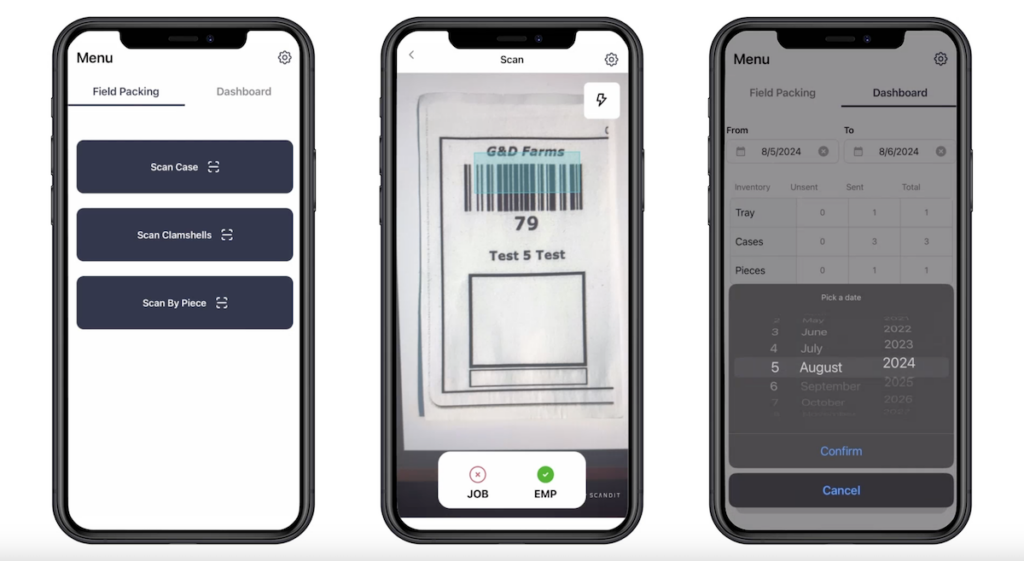
Our project management team stepped up to the plate, determined to meet every one of Wish Farms’ demands. With an intuitive interface featuring large, high-contrast buttons, workers can easily navigate the app, even with gloves on. The scanner efficiently processes thousands of QR codes and barcodes per hour, no matter the weather. To top it off, we included a training mode so new users can get the hang of it without risking any real data. As a result, Wishfarms has a seamless, efficient berry-picking process that stands up to the toughest conditions.
How can Relevant Help Grow your Farming Business?
These two cases are just a few innovative solutions we’ve brought to life at Relevant. We’ve partnered with other innovative startups and Fortune 500 leaders to help them digitize business with:
- Custom agriculture IoT Solutions: Our software development services focus on creating custom IoT solutions tailored specifically for agribusinesses. Whether you need to optimize water use, improve soil health, or monitor crops in real-time, our systems offer precise data and automation.
- AI and Data-Driven Insights: We can create AI-powered solutions to anticipate weather changes, detect pest threats, and determine the ideal planting time. These insights enable you to make informed decisions that maximize yields and profits.
- Efficiency Through Automation: We understand the value of time, which is why our software solutions focus on automation. From irrigation systems that water crops precisely to robotic systems that manage tasks like planting and harvesting, we help streamline your operations.
- Expert Support to Guide Your Success: The journey into new technology can feel complex, but with Relevant, you gain a partner that takes care of all aspects—from initial setup and system integration to maintenance and optimization.
Whether your goal is to boost efficiency, raise crop yields, or farm sustainably, Relevant has the skills and technology to help you succeed. Contact us!
Our core services:
Do you want a price estimate for your project?
Do you know that we helped 200+ companies build web/mobile apps and scale dev teams?
Let's talk about your engineering needs.
Write to us